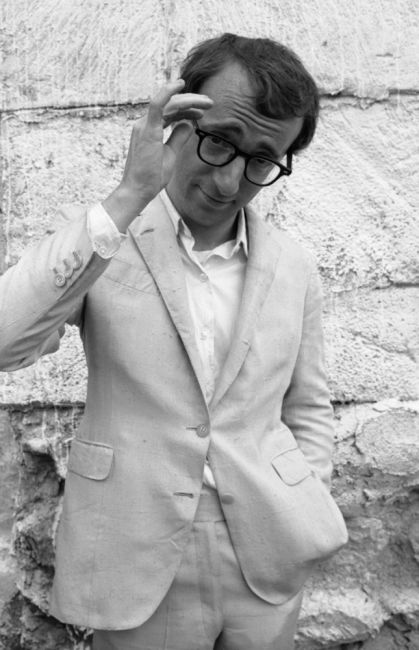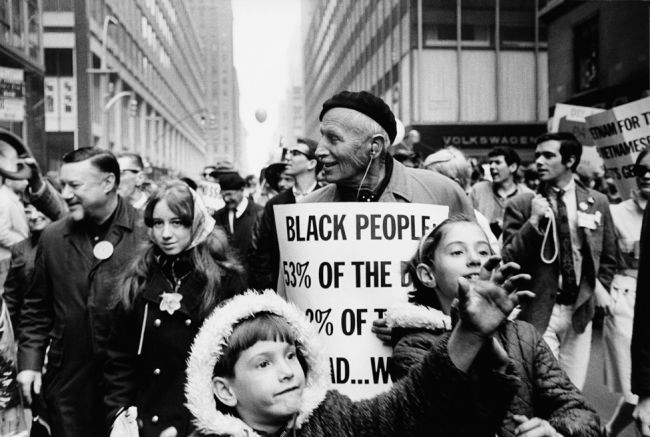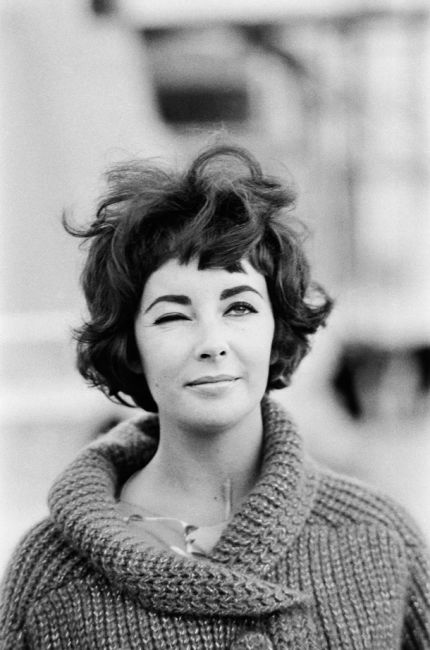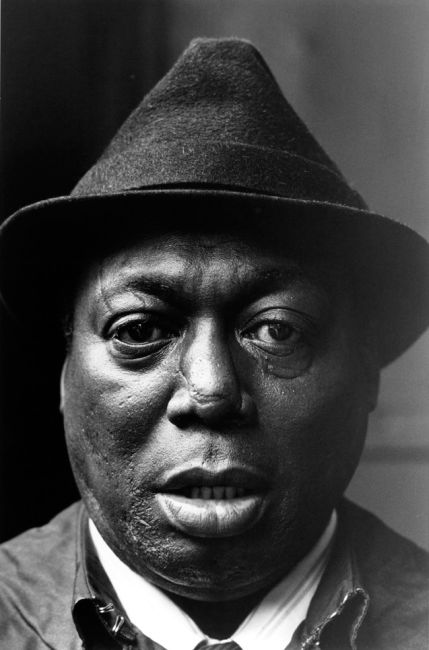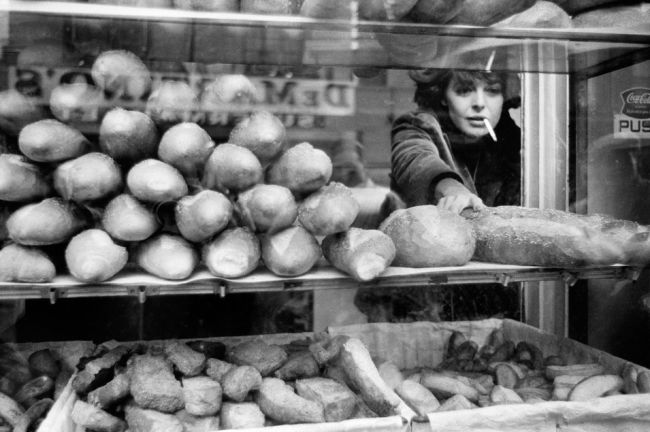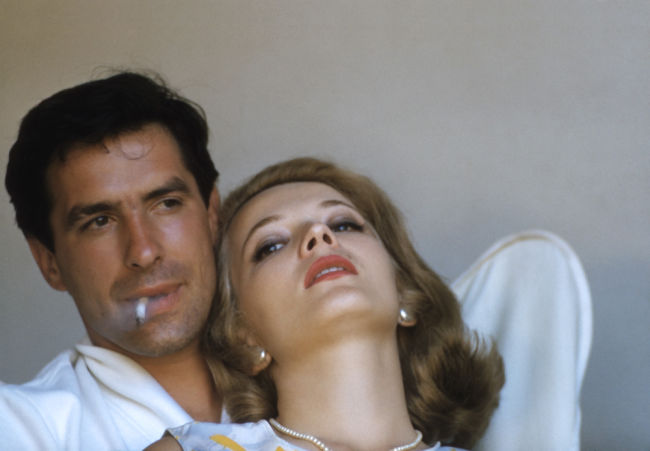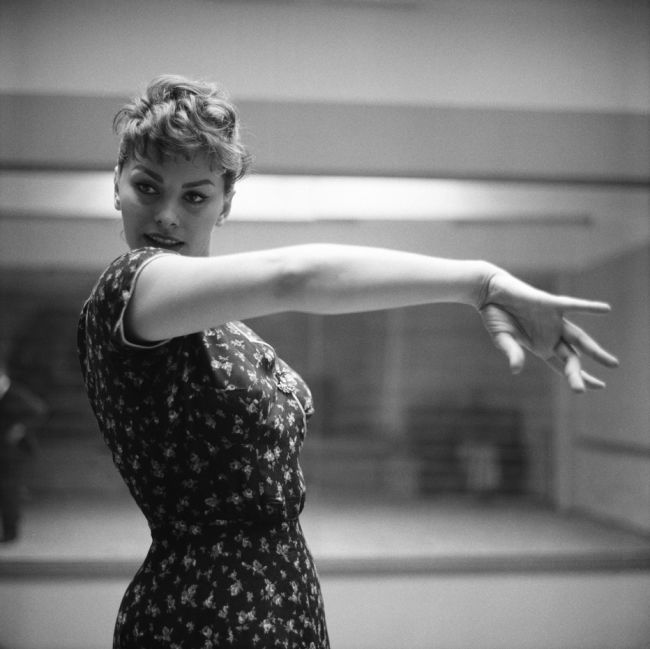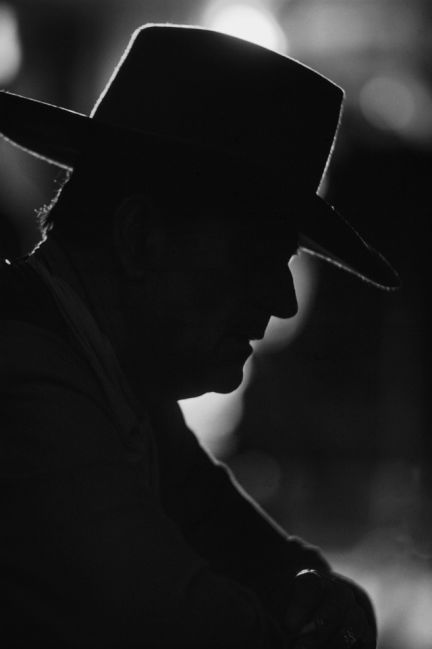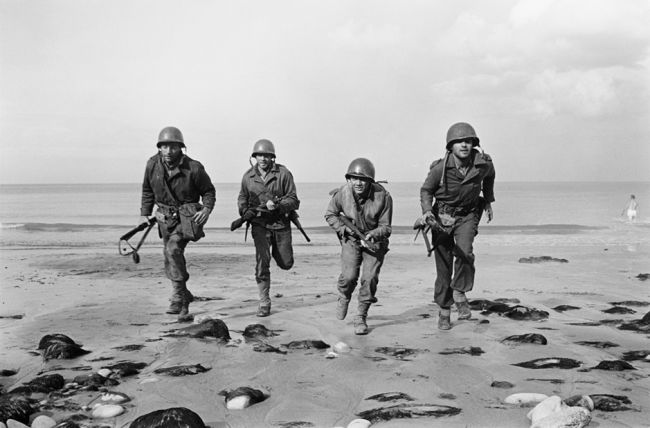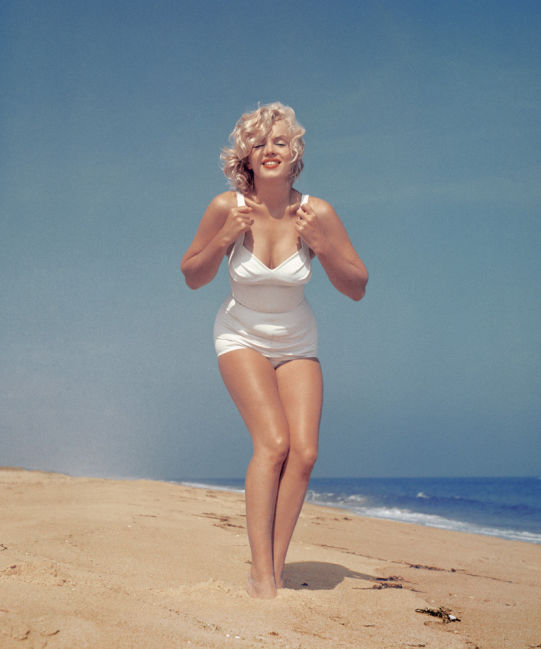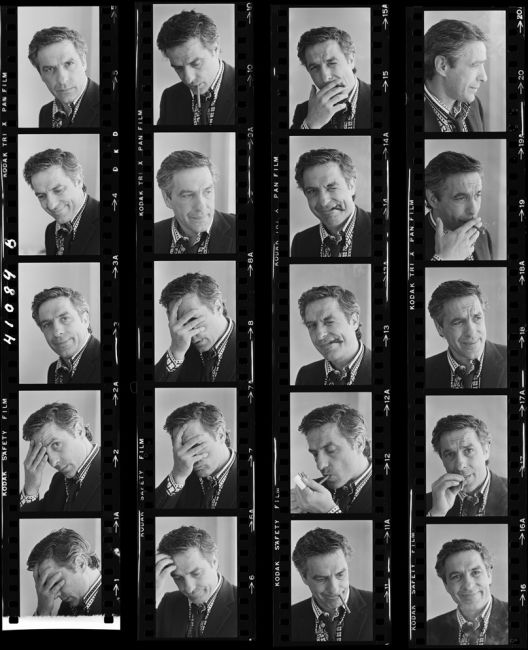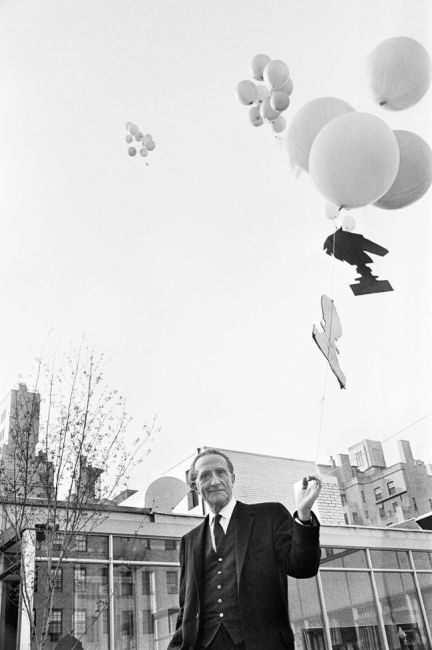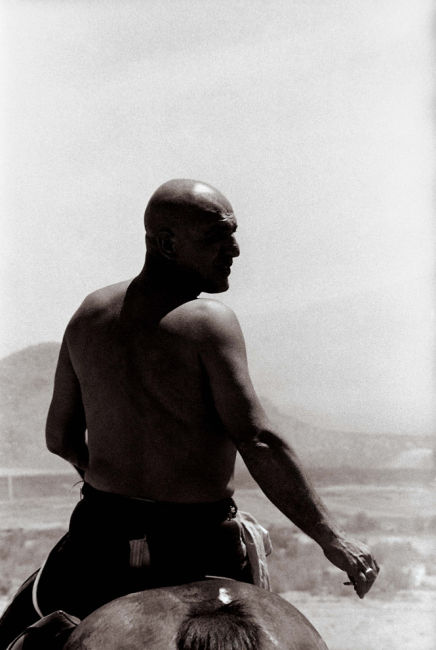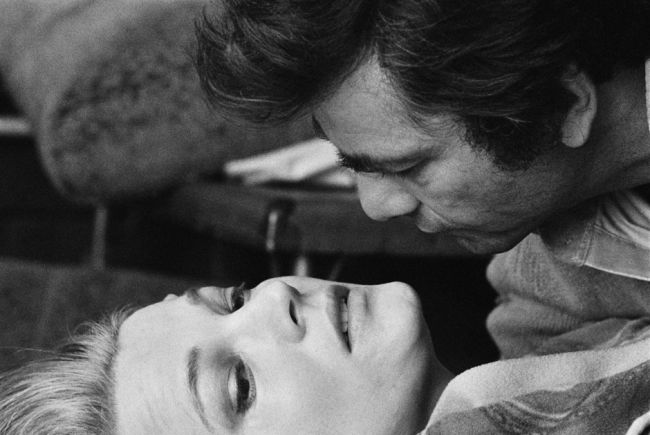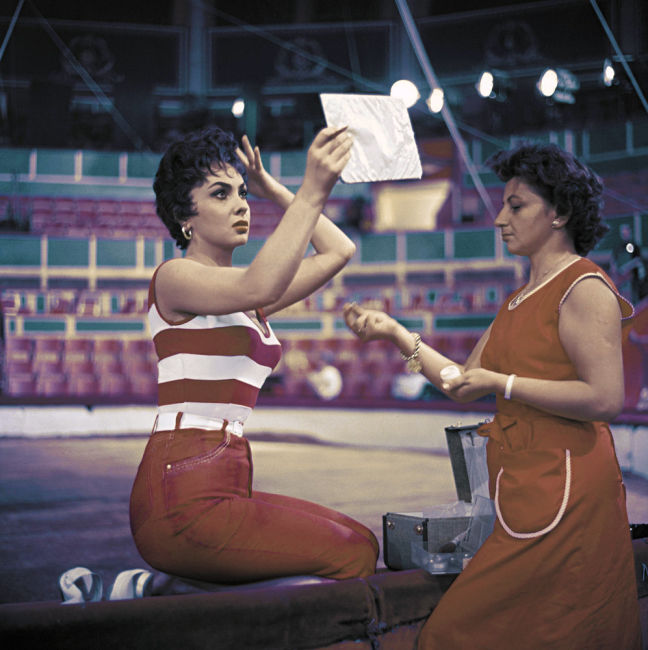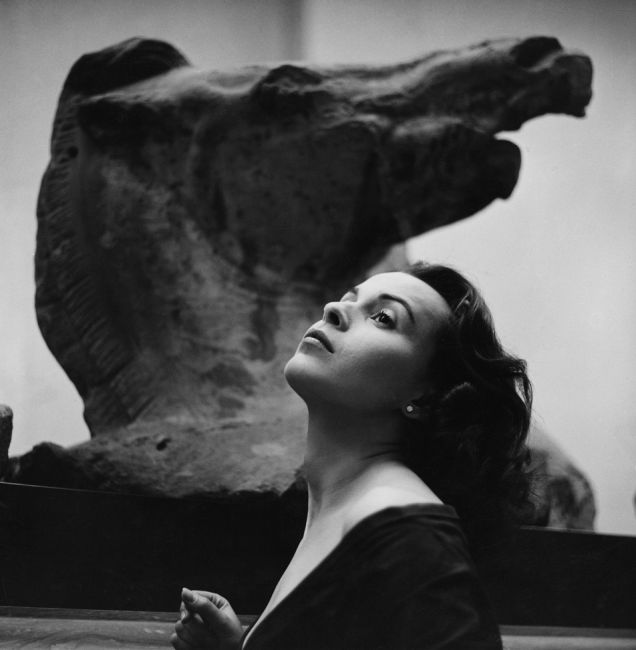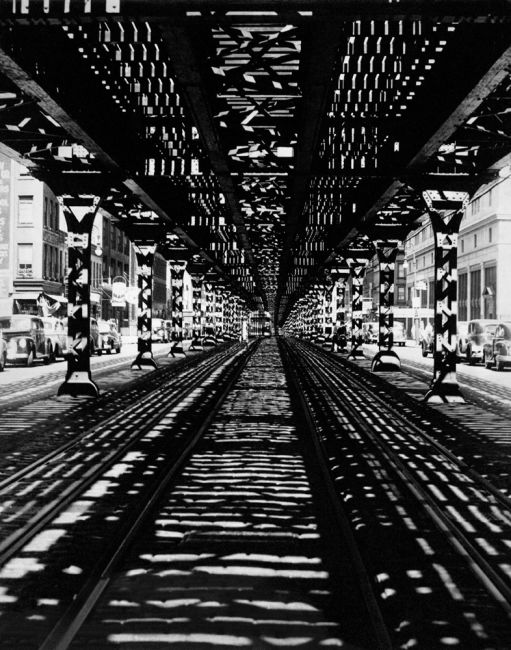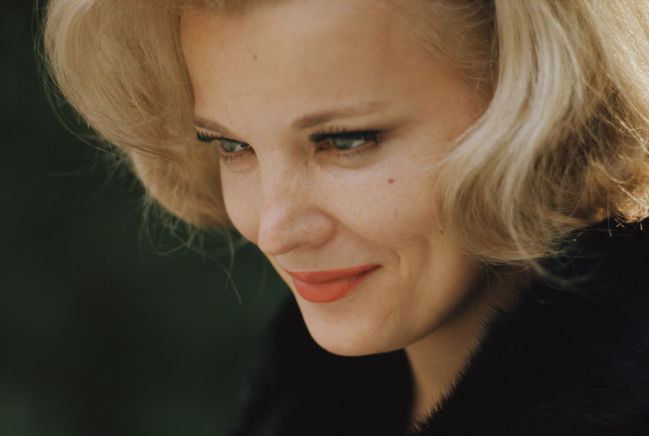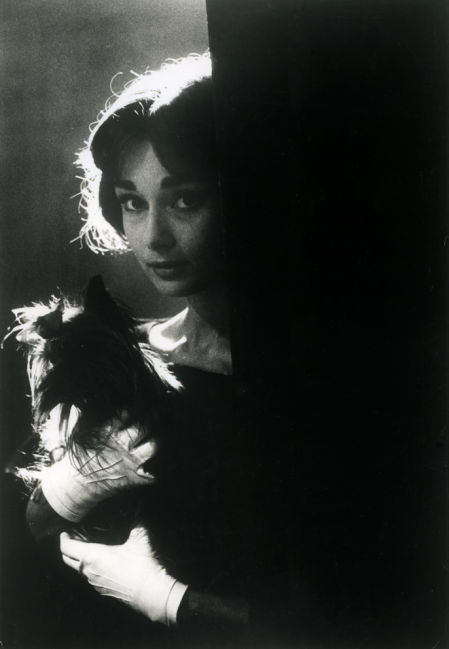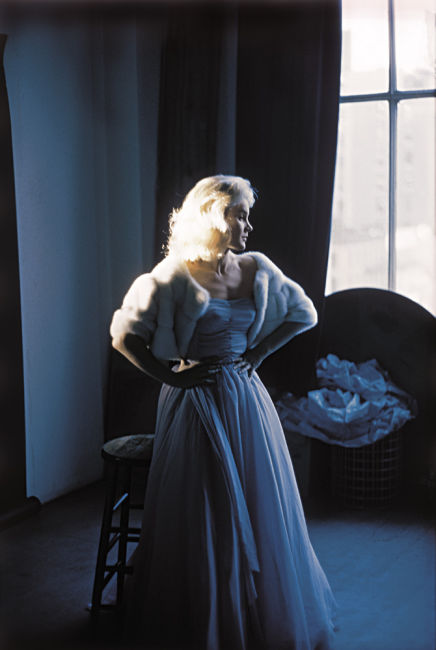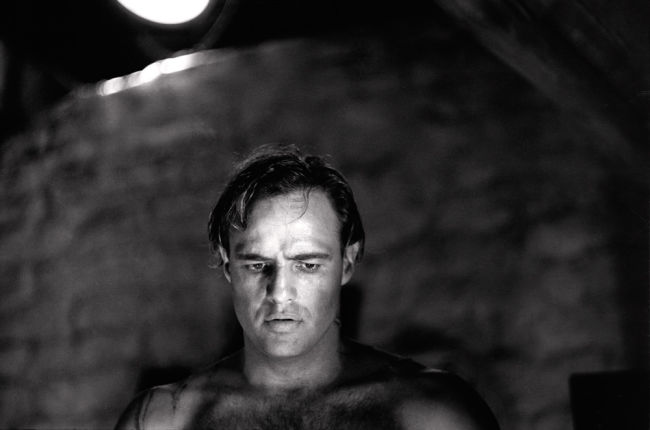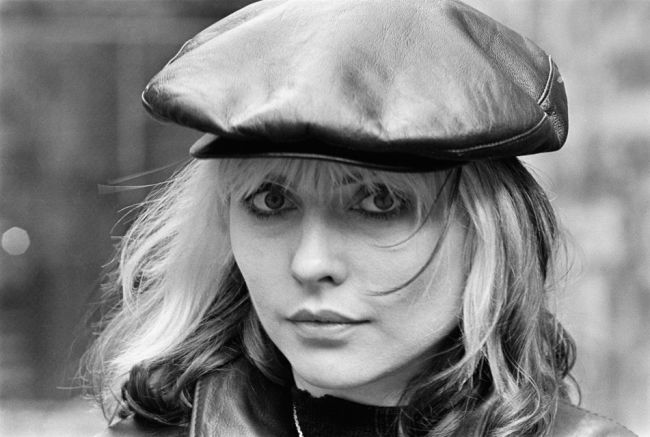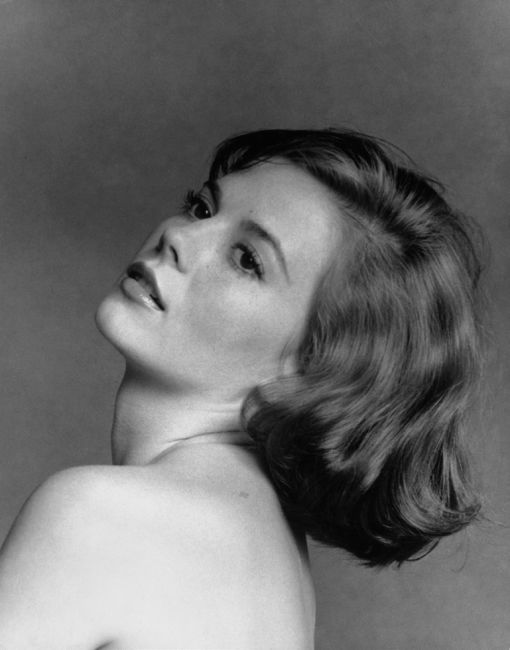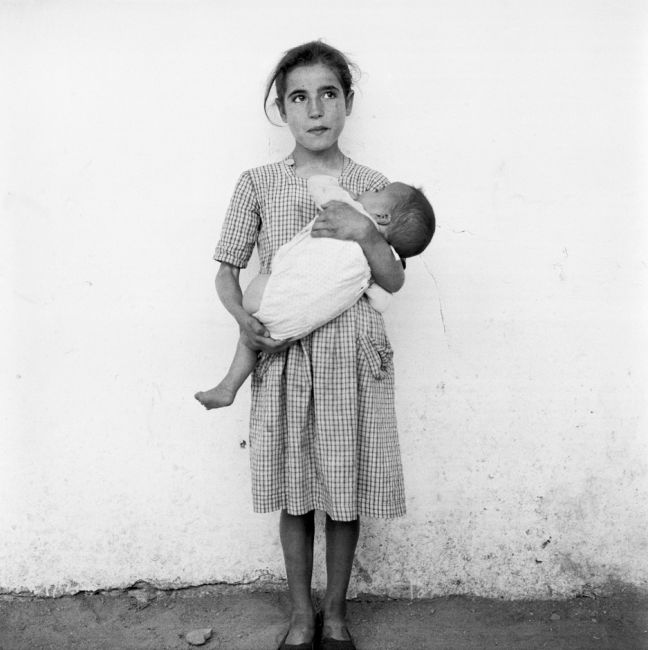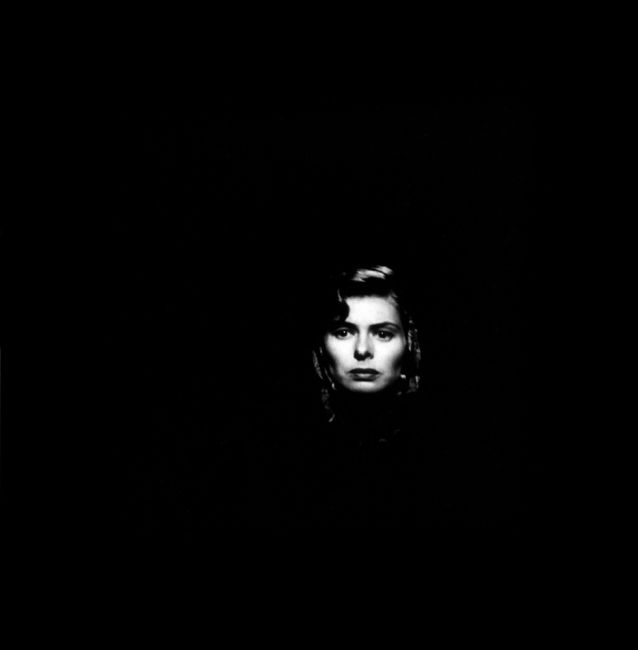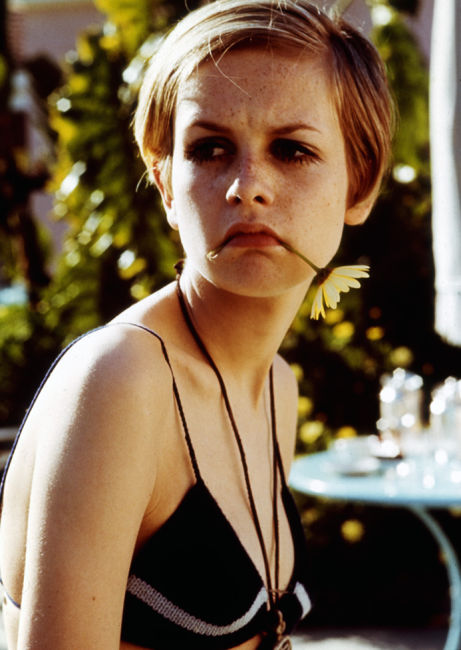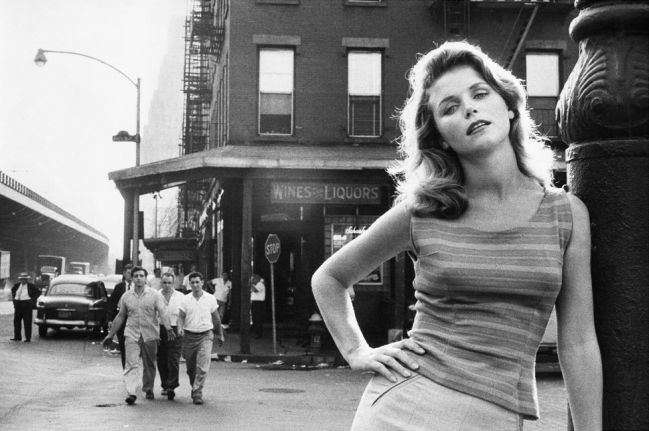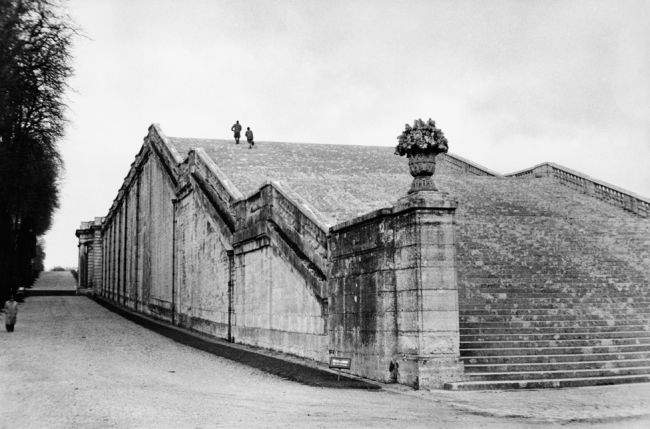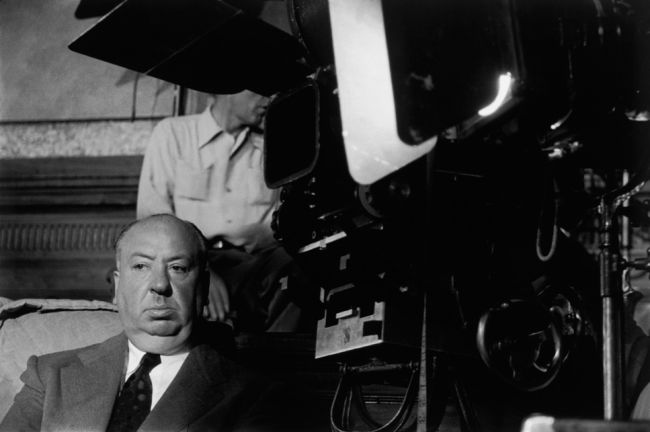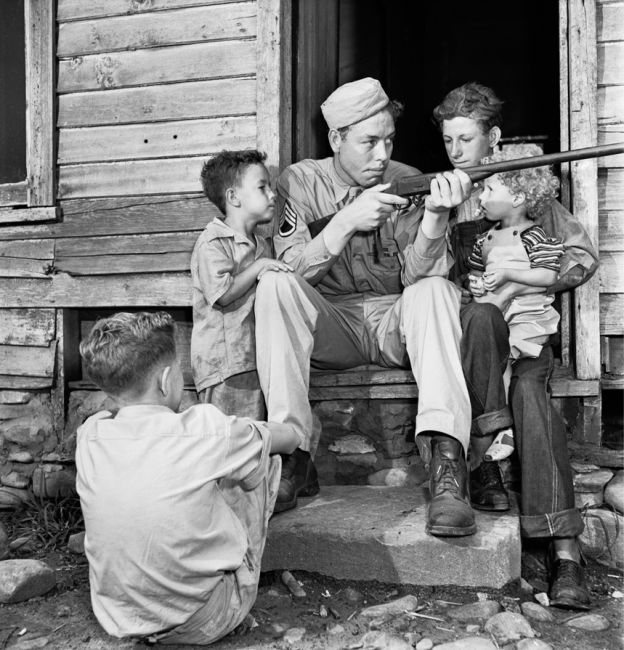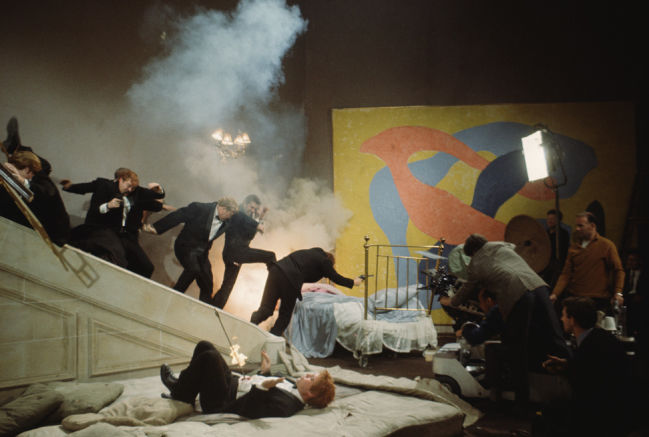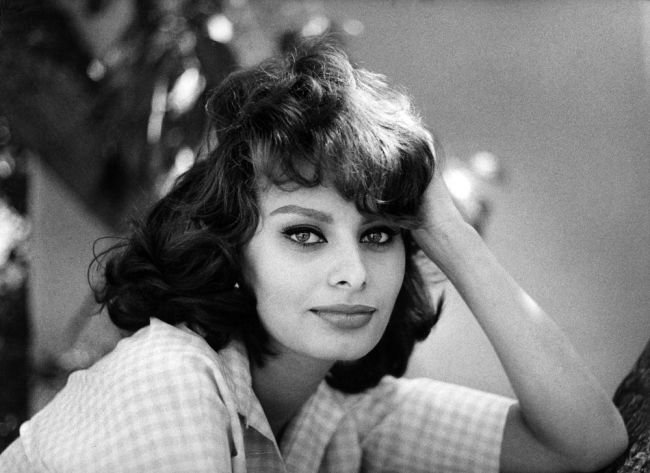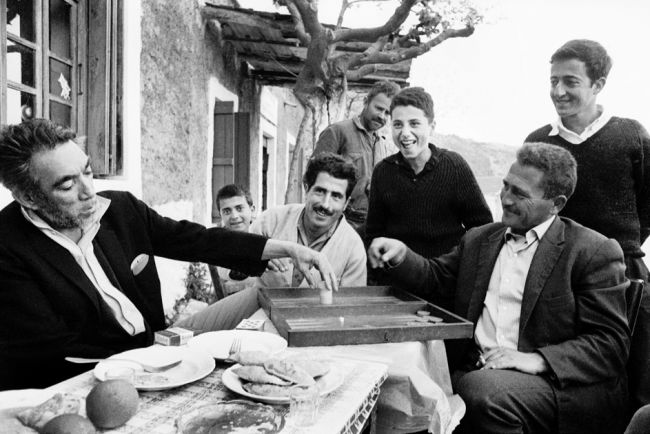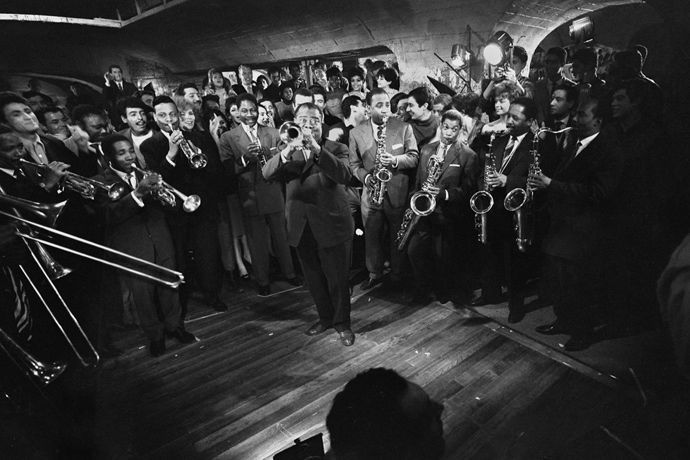
Paris Blues
Produced by Sam Shaw, 1961
Paris Blues was the first film Sam Shaw produced. Never without his still camera, he also photographed the making of the movie, based on Harold Flender's 1957 novel of the same name. The story follows two expatriate Jazz musicians living in Paris, played by Sidney Poitier and Paul Newman, and their romances with vacationing American tourists played by Joanne Woodward and Diahann Carroll. Shaw originally imagined the film as an interracial love story. A subject matter too bold for the Hollywood studios at the time, the story was changed to include same-race couples. The film features Louis Armstrong as the trumpeter Wild Man Moore and a score by the legendary Duke Ellington.
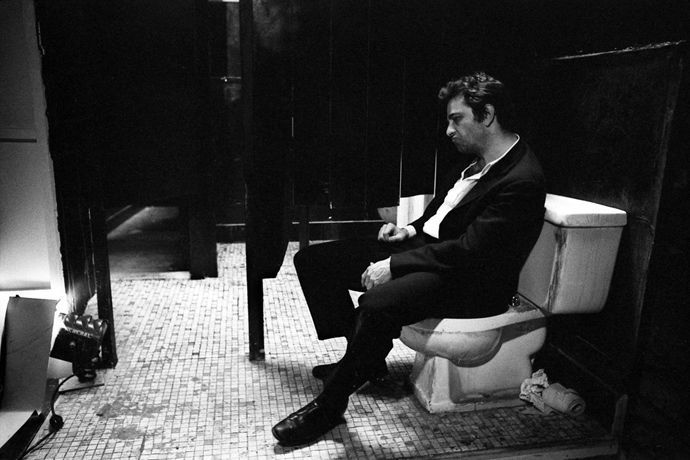
Husbands
Associate Producer Sam Shaw, 1970
Husbands tells the story of three friends Harry, Archie and Gus, (Ben Gazzara, Peter Falk and John Cassavetes) coping with the sudden death of a friend. The men channel their grief into a few days of drinking and hanging out, and eventually wind up at a casino in London. Meta Shaw, Sam's daughter, plays the part of Annie, Harry's wife, who during a fight lurches at Harry with a knife. In addition to appearing as one of the main actors, John Cassavetes wrote and directed the film. Shaw's photographs appear on posters and Shaw also handled other publicity related to the film.
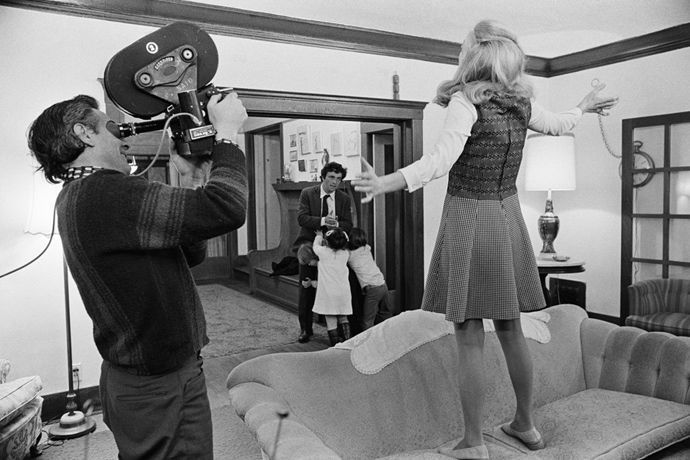
A Woman Under the Influence
Produced by Sam Shaw, 1974
A Woman Under the Influence is a John Cassavetes film nominated for an Academy Award for Best Director and Best Actress (Gena Rowlands). It also received Golden Globe nominations for Best Picture, Best Director, and Best Screenplay, and Gena Rowlands won the Golden Globe for Best Motion Picture Actress. The film appeared on the 1974 National Board of Review Top Ten Films list and was a 1990 National Film Registry winner. A Woman Under the Influence was shown at the 1975 San Sebastian Film Festival, where Rowlands was named Best Actress and Cassavetes won the Silver Shell Award for Best Director. In addition to producing the movie, Sam Shaw photographed it and incorporated these images in the film posters and other advertising he designed. Sam's brother Eddie Shaw appears as Dr. Zepp in the film.
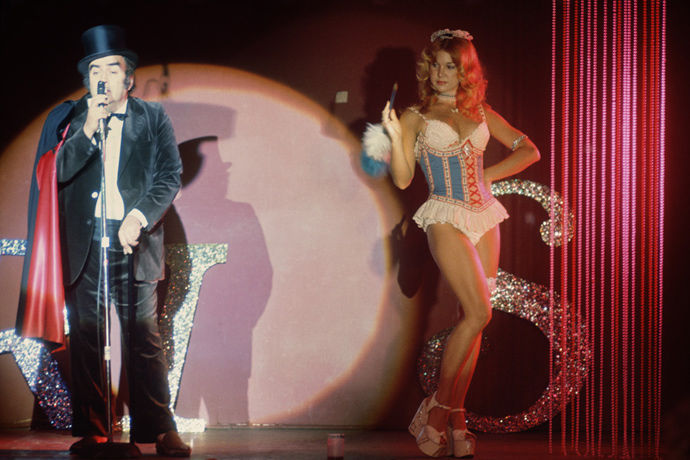
The Killing of a Chinese Bookie
Production Design by Sam Shaw, 1974
The Killing of a Chinese Bookie is a John Cassavetes film starring Ben Gazzara, a strip club owner whose gambling debts create trouble with the mob. The film features Sam Shaw's unique production design. Shaw was also originally a producer of the film, but later removed his name. As he often took on many roles in a film's production, Shaw photographed the shoot and worked on the film's publicity campaign as well. His work on The Killing of a Chinese Bookie is part of a continuum of burlesque themes and subjects that he photographed starting in the 1940's and throughout his career.
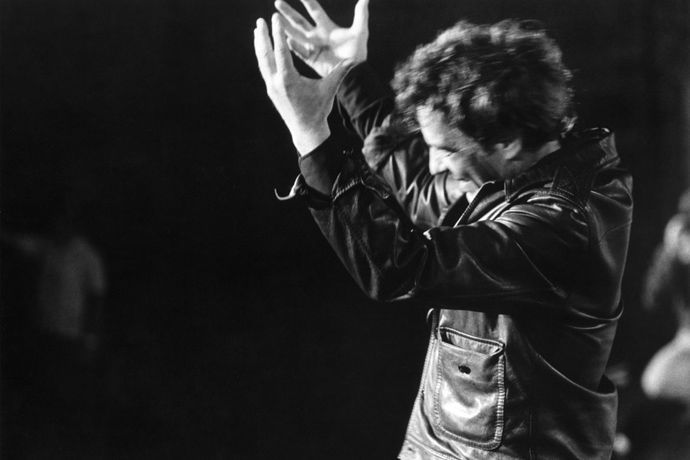
Opening Night
Executive Producer Sam Shaw, 1977
Sam Shaw was the Executive Producer of John Cassavetes' Opening Night. He also photographed the film. Earlier Shaw photographs from the Greek island of Crete, taken during the filming of Zorba the Greek in the 1960's, appear as enlarged back-drops on the stage in the theater scenes. In 1978 Gena Rowlands was awarded the Silver Bear for Best Actress at the Berlin International Film Festival for her powerful performance as the aging actress Myrtle Gordon.
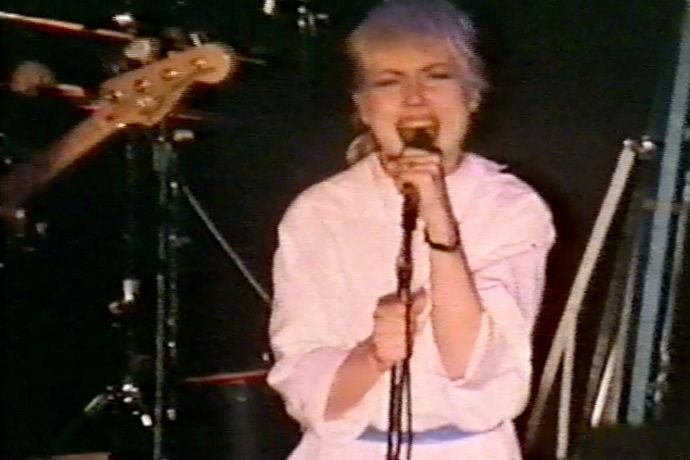
Blondie (Documentary)
Directed and produced by Sam Shaw, 1978
Sam Shaw directed and produced this documentary on the musician Debbie Harry and her band Blondie. It features live concert footage and was shot on location in New York City and Los Angeles, including at the famed Whiskey a Go-Go nightclub. Independent filmmaker John Cassavetes, Sam Shaw's longtime friend and collaborator, was one of the cinematographers.
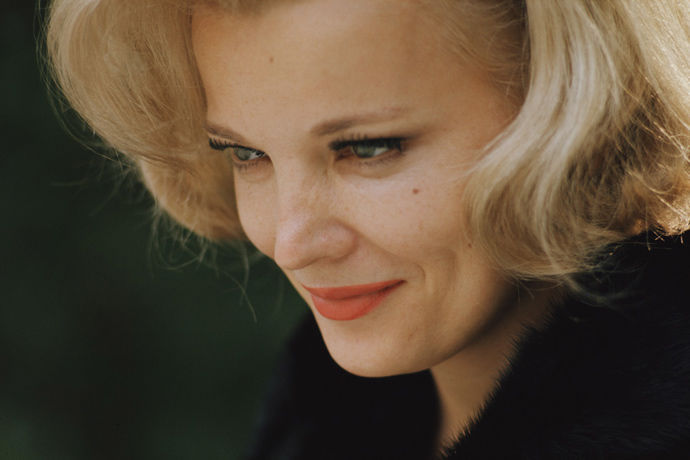
Gloria
Produced by Sam Shaw, 1980
Gloria was awarded the prestigious Golden Lion Award at the 1980 Venice Film Festival. John Cassavetes directed the picture starring his wife, Gena Rowlands, who received an Academy Award nomination for Best Actress for her role as a tough woman on the run with a young boy after gangsters kill the boy's family. In addition to producing the film, Sam Shaw also designed the titles, which incorporate paintings by artist Romare Bearden. Shaw and Bearden shared a studio in New York City when they were young artists in their twenties, and remained friends and collaborators long after.
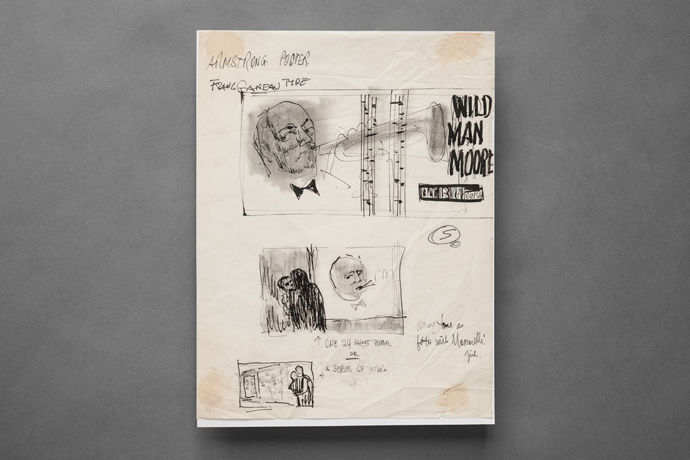
Paris Blues Posters
1961
Sam Shaw often had many roles on the films he made. Paris Blues, the first film Shaw produced, was no exception. Above are drawings Shaw created for a street scene featuring a poster of Wild Man Moore (Louis Armstrong) that Shaw designed for the film set. The drawing shows the poster layout as well as instructions for how it would appear in the background of a Paris street scene.

The Killing of a Chinese Bookie: Exterior Set
1976
As Production Designer of The Killing of a Chinese Bookie, Sam Shaw created sets to visually tell the story of the film. The billboards lining the parking lot of Cosmo Vitelli's (Ben Gazzara) strip club are large-scale drawings by Shaw based on photographs he took of actresses in the movie. Above, director John Cassavetes speaks to a crew member in the parking lot set.
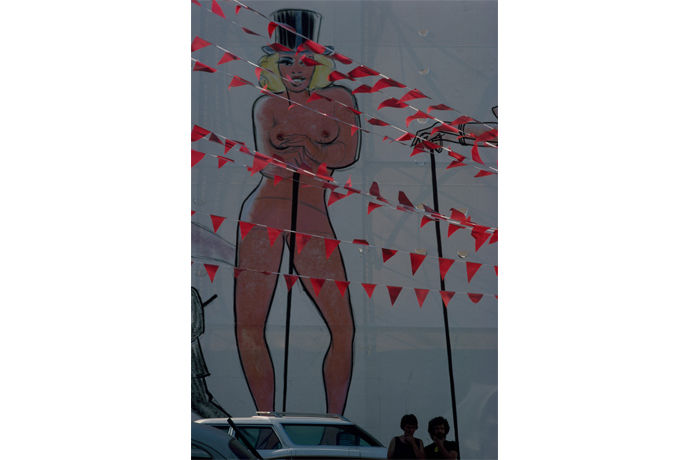
The Killing of a Chinese Bookie: Billboards
1976
Sam Shaw's drawings of actresses Azizi Johari and Alice Friedland were based on photographs he took of them for the film. These drawings were then enlarged to cover the billboards in the parking lot outside of the strip club. Shaw often used photography as a tool in creating the visual style of a film. While developing the idea for the parking lot set design, Shaw first photographed the empty location and then placed drawings on top of the photograph to see how it would work as a set. Shaw also photographed the final set, featured above.
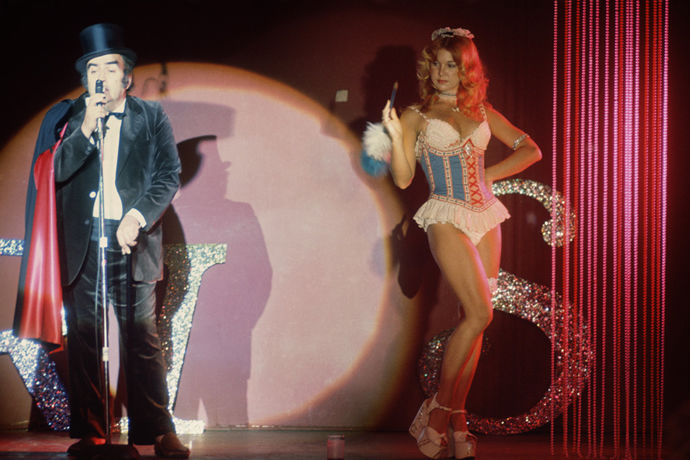
The Killing of a Chinese Bookie: Interior Set
1976
Burlesque is a theme that appears in Sam Shaw's work over the course of decades. As a photojournalist in the early 1940's, he photographed a variety of burlesque performers and venues. Shaw pulled from these references when designing the visual aesthetic of The Killing of a Chinese Bookie, a story about a strip club owner indebted to the mob, directed by John Cassavetes.
On Filmmaking
Moving Pictures
"From the Muybridge photos of a man walking or a horse running, a turn-of-the-century French postcard of a nude plucking the leaves of a daisy, to Gjon Mili's strobe sequences of multiple movements on a single negative, and Duane Michal's innovative poetic kinetic stories, photographers have shot 'moving pictures ...Most photographers' contact sheets are examples of many versions of a subject in themselves. Although one shot from the sheet may be chosen, it represents an edited selection, a key account of the contact's story."
Hollywood
"What is Hollywood?
A lot of corny pictures.
Some monstrous business people.
And serious filmmakers: producers, writers, directors, actors, camera and crew members, all of them wanting to do their best."
On Photography
The "off" moment
"Instead of the formal posed picture, I try to create one that is not posed. Even when I shoot the straight-on expression, I wait for the moment of personal contact. To get to that intimate personal involvement there might be various activities between myself as the photographer and my subject, the protagonist. I might shoot away, until the "off" moment that represents the less posed attitude."
The one exception
"Personally, I search to find. Finding the unexpected, what is just around the corner, what is about to happen, is a visual adventure. It has only been very rarely that I set up a photographic composition, the one exception being the photo of Marilyn Monroe in the skirt-blowing sequence."
Kinetic style
"My point of view is not the single shot. I prefer the kinetic style of a series of candid life movements."
The professional
"The professional, who [is] out on an assignment, goes into deep concentration, to the extent of often becoming involved in the inner life of the story. [This] is not a chore but an extremely rewarding experience. This requires not only shooting what is before me, in essence my targeted story, but includes beyond this even the life on the periphery as well as what takes place behind the camera."
Simplicity
"What I prefer or am attracted to is the shot that is as simple as possible."
On Art
Rembrandt
"As an artist Rembrandt was my idol. He could depict the emotional psychological interpretation of humankind. As for composition, he developed the concept of the massive human pyramid of shape and form. Rembrandt could disclose the soul of the inner eye that journeyed through the passage of time. Rembrandt's own eye dug deep to exhume the internal vision of the human being. He was the source of magic, using materials on hand to search deep within the sub consciousness of the sitter."
Accidental arrangements
"As I walked the streets of New York, nature itself in the big city created accidental collages on the wall of posters, artlessly arranged, peelings of advertisements of concerts, rock; other signs suddenly caught my visual eye, the impressions and feelings of manmade accidental artistry came to my vision. These accidental man-made arrangements and tear sheets came to life like a Romare Bearden Cubist abstraction."
On Portraiture
Visual monument of mankind
"Perhaps the most important theme in photography is the portrait, the visual monument of mankind."
Actors and actresses
"An actor or actress is a living metaphor for people, it is easy to take these portraits. Spilling over the edge, they are the interpreters of civilian life."
Marlon Brando
"With Marlon I never knew what was going to happen. There was a magic to this man. He was always going counter to what you might expect and was never straight on."
Deborah Harry (Blondie)
"I feel the same excitement of a new photogenic, theatrical personality who is about to emerge as a star. She has all of the qualities that you can't pinpoint. That's what Monroe had, so did Sophia Loren and Ingrid Bergman. Of all of the stars I've shot for LIFE and Look magazines, only Lee Remick, Loren, and Deborah were never conscious of how they looked. They are completely free before the camera. They don't rely on makeup or good angles. They give themselves completely to the camera."
On Marilyn Monroe
The joy of Marilyn
"I think the major reason for her myth becoming larger and larger every day, for the legend growing on such a gigantic scale, is not the tragedy of her life. It's the joy of the girl; she presented the joyous moment of a vibrant woman. More important, she represents the freedom, which kids have today. Only she was fifteen or twenty years ahead of the times, so she paid the price for her freedom."
As she was
"I just want to show this fascinating woman, with her guard down, at work, at ease off-stage, during joyous moments in her life and as she often was, alone."
The freest symbol there is
"She represented freedom as few other women have. She said of herself that she was a sex symbol. That is true. It's the freest symbol there is. It's the symbol of life freeing itself from the tyranny of fear. Men are in terror of women's sexuality; it has always been so. Anytime a woman behaves as freely as Marilyn Monroe, one part of us loves it, the other hates and fears it."
Makeup
"Most of these photos were done without makeup loaded on except those when she was on the set working. I could never shoot a face plastered with makeup."
